Do you have a question about the Hitachi SJ300 Series and is the answer not in the manual?
Explains safety instruction messages, signal words, and symbols used in the manual.
Details precautions and safety measures when dealing with high voltage components and systems.
Lists cautions related to mounting procedures for the inverter unit.
Provides warnings for electrical practices and wire specifications during installation.
Lists warnings and cautions applicable to troubleshooting and maintenance procedures.
Summarizes warnings and instructions for electrical practices and wire size compliance.
Details wire size and tightening torque for field wiring terminals.
Provides warnings regarding the selection and use of wire connectors for field wiring.
Explains how to set motor overload protection using parameters.
Details the history of revisions made to the manual, including dates and manual numbers.
Lists the primary features and capabilities of the SJ300 Series inverter.
Explains the structure and meaning of the SJ300 inverter model numbers.
Provides detailed specifications for SJ300 inverters in the 200V class.
Provides detailed specifications for SJ300 inverters in the 400V class.
Continues detailing specifications for SJ300 inverters in the 400V class.
Describes the configuration and types of input signals for frequency setting.
Lists functions that can be assigned to intelligent input terminals.
Details intelligent output terminals and their functions, including relay contacts.
Lists various user-configurable parameters for the inverter.
Provides detailed ratings for various signal inputs and outputs.
Explains the benefits of using variable speed drives in industrial applications.
Defines what an inverter is and how it functions in a variable-frequency drive system.
Discusses past and present methods of speed control for AC induction motors.
Covers input voltage requirements and the three-phase nature of SJ300 inverters.
Details how to connect the motor to the inverter's output terminals and grounding.
Explains how braking works and the role of braking resistors.
Describes how to understand and configure velocity profile graphs for speed control.
Provides steps for unpacking and inspecting the new SJ300 inverter.
Describes the physical construction and interface elements of the inverter.
Explains how to access the inverter's wiring area by removing the front panel.
Details how to access the expansion bay for installing interface circuits.
Emphasizes studying caution messages for mounting to prevent mistakes and ensure safety.
Guides the user in selecting a suitable location for mounting the inverter.
Details requirements for ensuring proper ventilation and clearance around the inverter.
Provides instructions on temporarily covering ventilation openings to prevent debris entry during installation.
Guides the user to locate the appropriate drawing for inverter dimensions based on the model.
Warns about matching input voltage to inverter specifications for proper operation.
Warns against powering a three-phase inverter with single-phase power due to potential damage.
Warns against connecting AC power to the output terminals to prevent damage and injury.
Guides on connecting the motor to the inverter's output terminals, including grounding.
Advises on wiring logic signals for application control after initial setup.
Instructs to remove protective material from inverter vents before electrical operation.
Outlines the procedure for conducting a powerup test to ensure safe and successful application.
Lists the specific objectives to be achieved during the powerup test.
Provides crucial instructions and warnings to follow before and during the powerup test.
Introduces the layout and components of the inverter's front panel keypad.
Describes the functions of the front panel controls and indicators for parameter editing.
Explains the purpose of keypad keys, modes, and parameter access.
Guides on selecting functions and editing parameters for the powerup test.
Details how to select the potentiometer as the source for motor speed command.
Explains how to select the keypad RUN key as the source for the RUN command.
Guides on configuring the inverter for the correct number of motor poles.
Explains how to monitor motor speed indirectly via the inverter's output frequency display.
Provides a checklist and steps for running the motor for the first time after parameter setup.
Introduces the benefits and complexity of inverter configuration and parameters.
Describes the front panel keypad as the primary interface for accessing functions and parameters.
Details the layout and components of the inverter's front panel keypad.
Explains the function of each key and indicator on the inverter's front panel keypad.
Explains the different operational modes of the inverter: Run, Stop, Program, Monitor, and Trip.
Discusses the possibility of editing parameters while the inverter is in Run Mode.
Describes the different sinusoidal PWM switching algorithms available for motor control.
Details various parameters that can be monitored using the "D" Group functions.
Explains how to cycle through and view trip event and programming error information.
Covers fundamental settings affecting the inverter's motor output, including frequency and torque characteristics.
Explains how to adjust voltage input characteristics for the analog input terminal.
Details how to adjust current input characteristics for the analog input terminal.
Describes adjustments for bipolar voltage input characteristics.
Allows selection between analog input terminals for the [AT] function.
Provides options for summing or disabling [O2] and [OI] inputs.
Covers settings for voltage input active range and frequency enable.
Explains how to configure multi-speed settings and jog frequency for motor control.
Details inverter torque control algorithms like V/f and sensorless vector control.
Explains how to use torque boost to improve low-frequency starting torque.
Describes the V/f free-setting mode using parameter pairs to define a multi-segment V/f curve.
Discusses advanced torque control algorithms for low-speed performance.
Explains torque control using an encoder for precise position/velocity control.
Details parameters for adjusting manual torque boost values.
Allows selection of different V/f characteristic curves.
Covers adjusting the voltage gain of the inverter.
Explains how to configure DC braking for stopping and starting motor rotation.
Describes how to impose upper and lower limits on the inverter output frequency.
Details how to configure jump frequencies to avoid resonant speeds.
Explains how the acceleration pause function minimizes over-current trips during acceleration.
Describes how the PID loop calculates ideal inverter output to control a process variable.
Explains the AVR feature for maintaining constant output voltage during input fluctuations.
Covers energy saving and fuzzy logic for optimizing acceleration/deceleration.
Continues the explanation of optimal accel/decel operation and its limitations.
Details the two-stage acceleration and deceleration ramps available.
Explains standard and alternative acceleration/deceleration curves.
Adjusts input characteristics for analog inputs, including range and scaling.
Determines how the inverter resumes operation after a fault causes a trip event.
Explains the thermal overload detection and alarm settings for protecting the motor.
Describes the constant torque characteristic curves and their selection.
Details how to set the electronic thermal characteristic using a free-form curve.
Explains how the inverter adjusts output frequency to limit overload during acceleration or constant speed.
Describes how the software lock function prevents accidental parameter changes.
Covers miscellaneous settings like scaling factors and initialization modes.
Allows selection of torque limit modes, including 4-quadrant and terminal selection.
Details how the inverter controls final motor deceleration upon loss of input power.
Covers additional miscellaneous functions not in other groups.
Configures how the inverter performs a standard stop and restarts after a free-run stop.
Limits the time the inverter uses the dynamic braking accessory.
Describes the free-setting V/f mode using voltage and frequency parameter pairs.
Details how to assign options to the eight intelligent input terminals.
Summarizes all intelligent input functions at a glance, with detailed descriptions.
Summarizes all twenty-two functions for logic output terminals.
Lists option codes, terminal symbols, function names, and descriptions for output functions.
Lists functions available for assignment to analog output terminals [FM], [AM], [AMI].
Details parameters that work in conjunction with intelligent output functions.
Configures the serial communications port of the SJ300 inverter for network control.
Configures signals for analog output terminals, adjusting zero and span.
Determines how the inverter responds to reset input or keypad Stop/Reset key in a trip condition.
Explains how "H" Group parameters configure inverter for motor characteristics.
Lists programming error codes related to parameter conflicts and out-of-bounds values.
Lists crucial cautions to follow before operating the inverter.
Warns about potential damage if connection points exceed current or voltage limits.
Recommends drawing schematics and verifying connections to prevent damage and ensure smooth operation.
Provides a general example of logic connector wiring, power, and motor wiring.
Lists terminal names, descriptions, and ratings/notes for control and logic connections.
Lists intelligent input symbols, codes, names, and corresponding page numbers.
Lists intelligent output symbols, codes, names, and corresponding page numbers.
Illustrates four input configurations for interfacing inverter inputs with switches or PLC outputs.
Explains how to use [FW] and [RV] terminals for controlling motor rotation direction.
Explains how to use the Jog input [JG] to command the motor to rotate slowly for manual operation.
Explains how to select between two or three sets of motor parameters using [SET] or [SET3] functions.
Describes how the [FRS] terminal turns OFF output, allowing the motor to free-run to a stop.
Explains the USP function that prevents automatic startup when power is turned ON.
Assigns [CS] to an intelligent input terminal for commercial power source switching.
Explains how the [SFT] terminal locks parameters to prevent editing.
Selects between two sets of gains for the internal speed loop.
Selects between proportional and PI control functions.
Outlines two sets of overload restriction parameters that can be configured.
Describes the sinking outputs and their capabilities.
Shows diagrams for standard power failure operation of the inverter.
Illustrates power failure operation with modified control circuit wiring.
Explains the [TRQ] output signal related to the torque limit function.
Describes how output terminals signal when run or power-on time exceeds set thresholds.
Details how the [THM] output provides an early warning for electronic thermal overload trips.
Describes the configuration of [BRK] Brake Release and [BER] Brake Error outputs.
Lists output signals that require the SJ-FB Encoder Feedback board.
Describes analog input terminals for commanding inverter frequency.
Explains the analog input sampling filter and how to minimize noise.
Shows wiring examples for voltage and current analog inputs.
Details the analog/digital output on terminal [FM] for monitoring various parameters.
Explains the characteristics of the PWM signal for driving a moving-coil meter.
Describes the frequency-modulated output at terminal [FM] for accuracy.
Explains how [AM] and [AMI] terminals provide signals to monitor parameters like output frequency, current, and torque.
Introduces advanced torque control algorithms for performance at low speeds.
Lists vector control methods and their validity for different motor constant sets.
Explains how motor data selection depends on the motor constant set.
Lists preparation items and configuration verification before starting auto-tuning.
Provides step-by-step instructions for performing the auto-tuning procedure.
Describes the adaptive auto-tuning feature that refines motor constants during normal running.
Details requirements for connecting two or more motors to a single inverter output.
Explains why an OEM might need multiple motor profiles and how to select them.
Describes the function of AC reactors on the input side for harmonic suppression.
Explains the function of AC reactors or LCR filters on the output side for reducing motor vibrations.
Details how zero-phase reactors reduce radiated noise from inverter wiring.
Explains the function of EMI filters in reducing conducted noise from the power supply.
Mentions optional ferrite cores for meeting EMC Class B limits.
Describes capacitive filters for reducing radiated noise on the inverter input side.
Explains how DC link chokes suppress harmonics generated by the inverter.
Explains the purpose of dynamic braking for improving motor and load stopping ability.
Details how the inverter controls braking via a duty cycle method.
Lists critical safety messages to be read before troubleshooting or performing maintenance.
Provides general precautions and notes for maintaining the inverter and motor system.
Lists inspection items covered in this chapter, including daily and periodic checks.
Explains how the inverter detects and records fault conditions and how to clear them.
Describes status codes that provide clues to the cause of an error.
Lists common error codes and their probable causes when the inverter trips.
Shows how to access error codes using the monitor menu.
Displays performance data at the moment of a fault, such as output frequency and motor current.
Provides a chart for monthly and yearly inspection items and criteria.
Details the procedure for performing a megger test to check inverter insulation.
Recommends stocking spare parts to reduce downtime, including cooling fan and capacitor bank.
Illustrates how ambient temperature affects capacitor life.
Provides methods and circuits for measuring inverter output voltage safely.
Details the procedure for checking inverter transistors (IGBTs) and diodes.
Outlines the warranty period and conditions for repair or replacement.
Defines ambient temperature in relation to electronic unit heat dissipation.
Refers to the set output frequency for constant speed setting.
Defines the controller's ability to interact with a load to determine proper coefficients.
Explains the designed operating frequency for an AC induction motor.
Defines an energy-absorbing resistor used during deceleration.
Describes the torque needed to overcome static friction to start load motion.
Defines the frequency of the switching waveform modulating the AC output.
Refers to the European regulatory agency for electronic products.
Defines an inductor tuned to react at radio frequencies to attenuate.
Explains stopping the AC commutation to the motor using DC current.
Refers to the part of the drive between input rectifiers and output stages.
Defines the range of input change with no perceptible output change in control systems.
Refers to the keypad and associated devices for inverter interface.
Defines a semiconductor device allowing current flow in one direction.
Defines the percent of time a wave is ON versus OFF, or ratio of operating to resting time.
Explains the method of generating reverse torque to stop the motor using a braking resistor.
Defines an event causing the inverter to stop operation, often called a trip.
Electromagnetic Interference, the possibility of generating radiated electrical noise.
Describes drive capability for forward/reverse motor rotation and deceleration.
A method of stopping a motor by turning OFF its output connections, allowing it to coast.
Refers to motor speed for variable-frequency drives, proportional to attained speed.
Defines a whole number multiple of a fundamental frequency.
A unit of physical measure for work done per unit of time.
Insulated Gate Bipolar Transistor, used in Hitachi inverters for high-power switching.
The resistance of an object to being accelerated or decelerated.
A configurable input or output logic function on Hitachi inverters.
Defines a device that electronically changes DC to AC current.
A transformer providing electrical isolation for protection.
Describes manually commanding the motor/drive system to run indefinitely.
A frequency point on the output range to skip around.
A three-phase inductor installed in the AC input circuit to minimize harmonics.
The physical property of a body in motion causing it to continue in motion.
The ability to store preset discrete speed levels and control motor speed.
Consists of physical mass inertia and friction from guiding mechanisms.
National Electric Code, governing electrical wiring and installation in the US.
National Electric Manufacturer's Association device ratings standards.
A common logic-type discrete output using an NPN transistor as a switch.
A feature using encoder feedback for home search and stop position.
A ratio expressing phase difference between current and voltage.
Proportional-Integral-Derivative model for process control.
A physical property of a process of interest.
Pulse-width modulation for frequency and voltage control.
Describes the part of impedance that changes with frequency.
Defines an electronic device converting AC to DC power.
Method of generating reverse torque to stop the motor by allowing it to act as a generator.
Quality of control to maintain a parameter at a desired value.
Torque applied opposite to motor shaft rotation.
Windings of a motor that rotate, coupled to the shaft.
Voltage drop across a transistor device when in saturation.
Technique using motor constants to estimate torque without a position sensor.
The desired value of a process variable of interest.
An AC power source with Hot and Neutral wires.
Difference between theoretical synchronous speed and actual speed.
A nickname for the rotor frame assembly.
Stationary windings coupled to the motor power input.
The initial output frequency when the frequency command increases from zero.
A signal generator for feedback to the speed controlling device.
Lists the commands and single-character codes sent to a particular device on the network.
Details the 00 command for controlling Forward, Reverse, and Stop mode of the inverter.
Explains the 01 command for setting the output frequency in the standard profile.
Describes the 02 command for setting the logic state of intelligent input terminals.
Details the 03 command for reading the monitor data as a single block.
Explains the 04 command for reading the status of the inverter.
Details the 05 command for reading the inverter's trip history.
Describes the 06 command for reading a single parameter value from the inverter.
Explains the 07 command for setting a parameter value in the EEPROM.
Details the 08 command for initializing inverter parameters to factory default values.
Explains the 09 command for verifying parameter setting capability in EEPROM.
Describes the 0A command for setting a value in the EEPROM.
Explains the 0B command for recalculating internal motor constants.
Describes the standard affirmative reply using the ACK character.
Details the standard negative reply using the NAK character.
Explains how the inverter protocol computes BCC for data integrity verification.
Lists user-programmable parameters and their default settings for keypad entry.
Details the default settings for the main profile parameters in the "F" Group.
Lists default settings for standard functions within the "A" Group.
Lists default settings for standard functions in the "A" Group.
Continues listing default settings for "A" Group parameters, including frequency and braking.
Lists remaining default settings for "A" Group parameters, covering analog inputs and acceleration/deceleration.
Lists default settings for fine-tuning functions in the "B" Group.
Continues listing default settings for "B" Group parameters, including overload restriction and software lock.
Lists remaining default settings for "B" Group parameters, covering various controls and settings.
Lists default settings for intelligent terminal functions in the "C" Group.
Continues listing default settings for "C" Group parameters, including communication and analog settings.
Lists final default settings for "C" Group parameters, covering various calibrations and modes.
Lists default settings for motor constant functions in the "H" Group.
Continues listing default settings for "H" Group parameters, including auto-tuning and speed constants.
Lists default settings for expansion card functions in the "P" Group.
Continues listing default settings for "P" Group parameters related to expansion cards.
Lists default settings for user-selectable menu functions in the "U" Group.
Ensures HF impedance between inverter, filter, and ground is minimal.
Advises avoiding unnecessary conductor loops and parallel arrangements of signal and power wiring.
Recommends using shielded wiring for motor and control lines, ensuring proper shield connection.
Advises separating interfering cables and minimizing distances to reduce interference.
Recommends minimizing distance between interference sources and sinks to decrease interference effects.
Emphasizes following safety measures during filter installation and ensuring proper ground connections.
Lists power supply specifications for SJ300 inverters, including voltage and frequency variations.
Recommends using a filter designed specifically for the SJ300 inverter.
Provides wiring recommendations, including shielded wire and carrier frequency settings.
Lists environmental guidelines for filter usage, including temperature, humidity, and vibration.
Index entries starting with 'A'.
Index entries starting with 'B'.
Index entries starting with 'C'.
Index entries starting with 'D'.
Index entries starting with 'E'.
Index entries starting with 'F'.
Index entries starting with 'G'.
Index entries starting with 'H'.
Index entries starting with 'I'.
Index entries starting with 'J'.
Index entries starting with 'K'.
Index entries starting with 'L'.
Index entries starting with 'M'.
Index entries starting with 'N'.
Index entries starting with 'O'.
Index entries starting with 'P'.
Index entries starting with 'R'.
Index entries starting with 'S'.
Index entries starting with 'T'.
Index entries starting with 'U'.
Index entries starting with 'V'.
Index entries starting with 'W'.
Index entries starting with 'D'.
Index entries starting with 'E'.
Index entries starting with 'F'.
Index entries starting with 'G'.
Index entries starting with 'H'.
Index entries starting with 'I'.
Index entries starting with 'J'.
Index entries starting with 'K'.
Index entries starting with 'L'.
Index entries starting with 'M'.
Index entries starting with 'N'.
Index entries starting with 'O'.
Index entries starting with 'P'.
Index entries starting with 'R'.
Index entries starting with 'S'.
Index entries starting with 'T'.
Index entries starting with 'U'.
Index entries starting with 'V'.
Index entries starting with 'W'.
Index entries starting with 'I'.
Index entries starting with 'J'.
Index entries starting with 'K'.
Index entries starting with 'L'.
Index entries starting with 'M'.
Index entries starting with 'N'.
Index entries starting with 'O'.
Index entries starting with 'P'.
Index entries starting with 'R'.
Index entries starting with 'S'.
Index entries starting with 'T'.
Index entries starting with 'U'.
Index entries starting with 'V'.
Index entries starting with 'W'.
Index entries starting with 'P'.
Index entries starting with 'R'.
Index entries starting with 'S'.
Index entries starting with 'T'.
Index entries starting with 'U'.
Index entries starting with 'V'.
Index entries starting with 'W'.
Index entries starting with 'Z'.

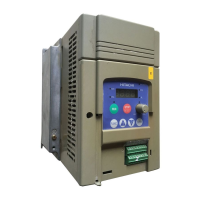
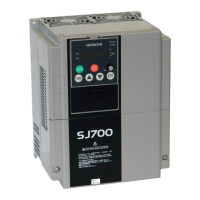
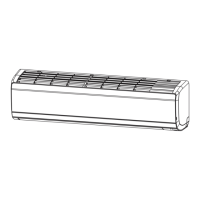
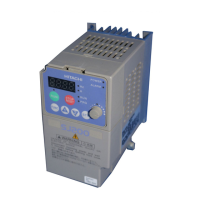
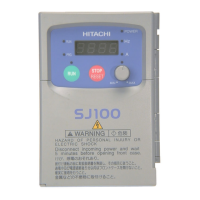

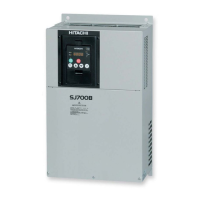
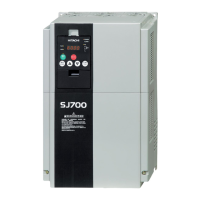



